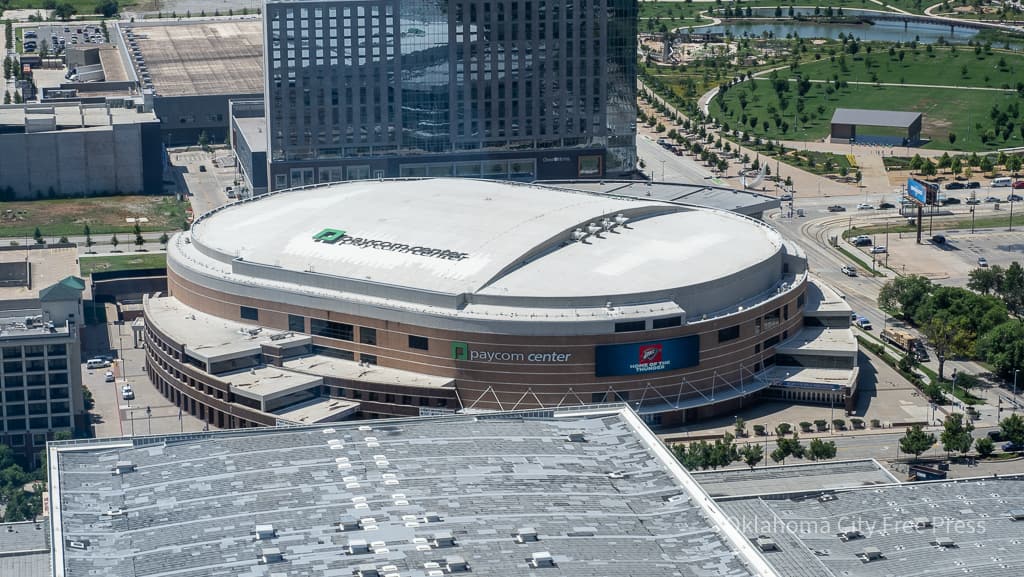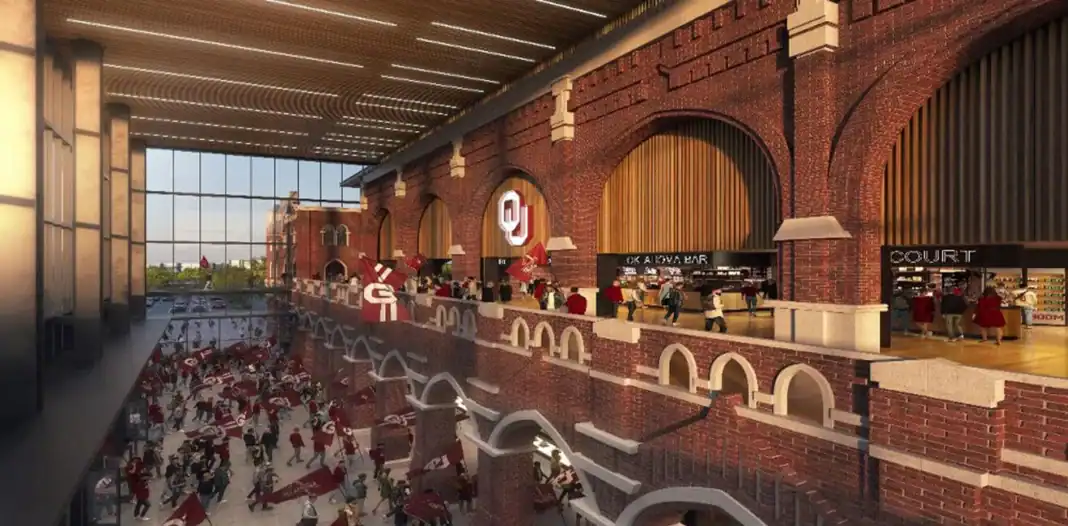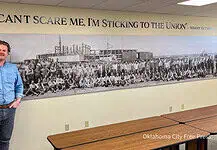OKLAHOMA CITY — With much of the Oklahoma City metro’s construction conversation focusing on billion-dollar arenas, stadiums, and skyscrapers in recent years, you might have missed all the talk of the significant development plans for the surrounding spaces.
There are currently plans for no fewer than three massive-scale multi-use sports entertainment districts to tie into these new mega-constructions around the metro, with sights set on tightly packed restaurant and bar options, trendy retail, event spaces, and more.
Make no mistake, these aren’t just mixed-use developments with restaurants, residences, and retail all joined in one or two buildings. These entertainment districts are often substantial, cityscape-defining projects.
It’s lately become a popular development style across the US, with urban-integrated destinations like Kansas City’s Power & Light District and Milwaukee’s NBA-focused Deer District both yielding significant recreation and tourism revenue, something that cities like OKC and Norman are desperate to rake in for their economies.
But just like the conversation-dominating sports venues themselves, these mammoth entertainment districts often come with mammoth price tags, and that can mean taxpayer funding plans, city government battles, and public pushback.
So let’s take a look at the plans, ownerships, and public funding possibilities for some of these entertainment district goliaths that may soon enough be defining the whole commercial character of central Oklahoma.
Oklahoma City Thunder entertainment district downtown
The most recently announced major entertainment district project may also end up being the most lucrative, with the Oklahoma City Thunder having just secured their first NBA championship and interest and investment in the team right now at an all-time high.
After securing nearly $1 billion in city tax funding to construct a new, state-of-the-art arena for the Thunder in a contentious late-2023 election, the team’s owners have turned their sights to establishing a newly dedicated commercial space around the new arena downtown.

The current Paycom Center, home of the Oklahoma City Thunder, will be demolished once the new Paycom Center is built next door, where the old Cox Center is being demolished, clearing space for an entertainment district. (B.DICKERSON/Okla City Free Press)
At the Oklahoma City Council’s June 17th meeting, councilors voted 8 to 1 to guarantee Thunder ownership the right to purchase and demolish the existing Paycom Center once the new arena is completed, and to develop that land into a new Thunder-focused entertainment district.
No plans have been floated yet to request public funding to develop that entertainment district, and while no valuation has yet been presented for the existing arena, its sale promises to put at least some of the new venue’s billion-dollar cost back into the City’s reserves.
That means all of the developed space will likely remain the property of the Thunder ownership, and with the district tying directly into both the new arena and Scissortail Park, the potential for enormous game day crowds in the area is likely huge.
Soccer-focused entertainment district south of Bricktown
Less than one mile away from the current and future Thunder arenas is the site of another projected sports-focused entertainment district for OKC, this time for the still-unnamed soccer team that was once the Energy.
After years spent struggling with financing and expansion plans, Energy ownership sold majority control of the franchise to high-end investment firm Echo, which quickly bought up the entire 40-acre Producer’s Cooperative land south of Downtown to develop the long-awaited MAPS 4 stadium and a sprawling entertainment district around it.
Though Echo made good on a longstanding agreement to donate nine acres of the land for the stadium – which will be built and owned by the City utilizing over $70 million of MAPS funding and Tax Increment Financing – the firm has retained the other 30+ acres for their own development.
Echo plans to turn that acreage into a massive new entertainment district built around the City’s growing cultural interest in soccer, and they’ve brought in some big names to make it happen.
They’ve secured international design firm Populous to head up planning for the new stadium in line with design work they’ve done from Liverpool to Hong Kong, and the newly named Creative Director for planning of the full “sports-anchored” entertainment district is none other than former Thunder superstar Russell Westbrook.

Echo is expected to begin development of the district alongside the new stadium’s construction with hopes to launch the new team, new stadium, and new entertainment district in close succession with a slew of new restaurant and bar options, outdoor sports-viewing spaces, hotels, and possibly new residences in the area.
Rock Creek Entertainment District – North Norman
Further down I-35, the City of Norman has been wading through one of the most contentious and controversial development proposals that Oklahoma has possibly ever seen, all centered on a gargantuan entertainment district plan on the city’s northern reaches.
What’s come to be known as the Rock Creek Entertainment District would be a staggering 240-acre development on land owned largely by the University of Oklahoma and the Norman Economic Development Coalition with designs already in place for a new OU arena, restaurants, hotels, apartments, and loads more.

If it ever becomes a reality, the billion-dollar Rock Creek development could be the largest cohesive entertainment district in Oklahoma, generating immense revenue for property owners and investors, as well as substantial sales tax revenue for Norman, while also potentially alleviating OU game day congestion in the crowded city center.
But the development’s plans have been continuously snagged and opposed during the more than five-year battle surrounding the project, mainly owing to the public funding that Norman tax dollars would require.
Public funding for the project is projected at around $230 million, culled from two separate tax increment districts focused on both sales tax and ad valorem taxes.
It’s that public funding component that’s seen years-long pushback from Norman residents, stretching the project through three mayors, multiple City Council decisions, citizen petitions, and marathon City meetings, and even leading to a state Supreme Court fight this year over a resident-led push for a public vote.

As city leaders and residents await that Supreme Court decision, the Norman City Council voted to approve the multi-phase funding plan under threat of lawsuit, with developers planning to sue if delays sent the project into default.
Time will tell if a public vote on the project’s funding is allowed to go forward, if the project will finally see its way to completion after all these years, or if this week’s seating of incoming Mayor Stephen Holman – a vocal opponent of the project – will have any effect.
One thing is for certain: if the Rock Creek Entertainment District ever becomes a reality, the metro’s other sports-focused entertainment districts just up the interstate are going to have some serious competition.
Brett Fieldcamp is our Arts and Entertainment Editor. He has been covering arts, entertainment, news, housing, and culture in Oklahoma for 15+ years, writing for several local and state publications. He’s also a musician and songwriter and holds a certification as Specialist of Spirits from The Society of Wine Educators.










